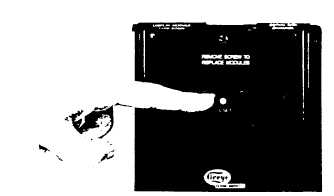TM 5-3895-374-24-2
Note: Depressing the reset button during a cycle will cause the control to shut the burner down and
recycle.
Description of Functions of Operating Controls
1.
Operating Controls: Generally pressure of temperature activated, the operating control closes,
causing the burner startup sequence to begin. When the operating control opens, the burner shuts
off. The operating control is connected in the L1-13 circuit on the wiring base.
2.
Limit Switches: These are generally pressure, water level or temperature activated.
a.
Recycle - when it is desired to stop the burner when the limit switch opens and restart it
when the limit switch reclosed, they are connected between Terminals L1 and 13.
b.
Non-Recycle - Limit switches may be connected in the circuit between Terminals 3 and
P. If a limit switch opens during the trial for ignition or firing period, all fuel valves will be
de-energized and the control will lockout on safety. If the limit switch opens ten seconds
after the purge begins, the control will lockout on safety.
3.
Fuel Valve End Switch Interlock: This is generally an integral switch mounted on the main fuel
valve and activated by the valve stem. It is connected between Terminal 3 & 13. The fuel valve
end switch interlock prevents a burner start-up if the valve stem is not in the "valve closed" posi-
tion.
CAUTION: The use of a Fuel Valve End Switch is recommended. All FLAME-MONITOR
systems have provision to accept the Fuel Valve End Switch Interlock. This will add additional
safety to prevent hazardous situations.
4.
Purge Interlock: Generally a firing rate motor linkage position switch or a differential air-pres-
sure switch, that proves a maximum purge air flow rate. It is connected between Terminals D and
8. The purge interlock proves that the purge air flow rate is at maximum during the purge.
5.
Running Interlocks: These generally are air flow switches, high and low fuel pressure switches,
oil temperature switches, atomizing media pressure switches, and excess smoke density controls.
These interlocks prove proper conditions for normal operation of the burner. They are wired in
series and connected between Terminals 3 and P.
6.
Low Fire Start Interlock: Generally a firing rate motor linkage position switch or a damper posi-
tion switch, will prove both the linkage and dampers are in their proper positions to begin burner
light off. This switch is connected between Terminals M and D.
FLAME SAFEGUARD
(page 3 - 1046)





